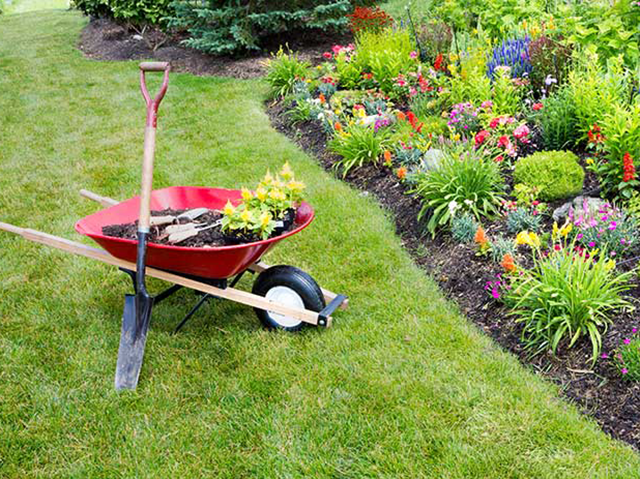
Spring is in the air and summer is quickly approaching which means you might want to get out and smell the roses, do some yard work or start that spring garden. It also means taking extra measures to protect your body to avoid tendonitis type of injuries, cuts/abrasions and arthritis flare ups. Overuse injuries or tendonitis type of injuries are very common in the spring. It can be caused by repetitive movements; such as weeding the flower bed, digging with a hand shovel, planting a garden, or prolong holding of tools. It can even begin when we are starting a new task or activities that you haven’t done in a while. Arthritis flare ups can happen at any time of the year so it is important to protect those joints. Lastly, make sure to clean and care for cuts and abrasions that can occur when working outside. Prompt and proper care can help to avoid unwanted and harmful infections to the body.
Here are a few things to keep in mind to help protect your body.
- Stretch: Before working in the yard and intermittently during the task you should take a break and stretch. This helps to break up the monotony of the same position or the same muscle groups being fatigued. We typically work hunched forward when in the yard. Stretching the upper back and shoulder can helpful to relieve that pain.
- Stretches to try:
- Chest Opener Stretch: Place both hands behind the head and pull elbows back. This helps to stretch muscles of the chest which are usually involved in a lot of lifting and holding of tools.
- Forearm Stretch: With one arm fully extended in front of you and hand facing down towards ground gently use the other hand to help stretch wrist down, it helps to stretch the muscle group on the top of forearm. This group can be overly used with weeding, raking and digging type of tasks.
- Shoulder Stretch: Cross one arm over your chest and with the other hand pull the elbow towards the other shoulder. This stretch targets the muscles of your upper back.
- Utilize an elevated table or potting table: Use elevated surface or table as a potting table. This will help to eliminate the repetitive bending over or squatting position. This can help save you from back and knee pain.
- Keep all tools within arm’s reach: Keeping your most commonly use tools within arm’s reach helps to eliminate unnecessary bending, twisting or moving. Example. Shovels, potting soil and seeds
- Use a yard wagon or cart: When moving equipment, pots, plants and water around the yard to prepare for planting invest in a small yard wagon to pull behind you. This can help save you from repetitive lifting, frequent trips across the yard and take some of the load off the arm from carrying. Pulling a wagon will reduces the force of friction and in turn lessen the load.
- Take small breaks: Jumping back into yard work our body might not be quite ready for hours of work. It is important to work in smaller time increments and take breaks. A good example would be work for 30 minutes and then take a 5 minute break. When our body become fatigued we put ourselves at a higher risk for an injury.
- Stay Hydrated: Make sure to keep water near by and take frequent drinks. Dehydration increases as we are more active. Signs of dehydration to watch out for are dry mouth, tiredness, feeling thirsty and being lightheaded.
- Larger handles on tools: If you have arthritis in your hands using tools or handles that are enlarge helps to reduce the pressure on the joints of your hand. It is better to work with hand in a wider grip and more relaxed position rather than a tightly fisted position.
- Always wear gardening gloves: Puncture injuries from thorns and other plants can cause a lot of harm. Pruning roses, blackberries, and other thorny plants can cut or poke a small hole in your skin. This allows an entry point for pathogenic organisms and can cause infections in the hand. If you do happen to have a puncture occur while gardening immediately stop and remove the thorn with tweezers, wash the area thoroughly and apply a bandage. If are concerned for an infection see a doctor immediately. Signs of infection that you need to be aware of are increased redness around the cut or puncture site, hot to the touch, yellow/puss like discharge from the area and increasing pain.
The American Society of Hand Therapist has produced a great education video on gardening safety.
If you do experience an experience working in the yard or garden our team at the Milliken Hand Rehabilitation Center is here for you!
